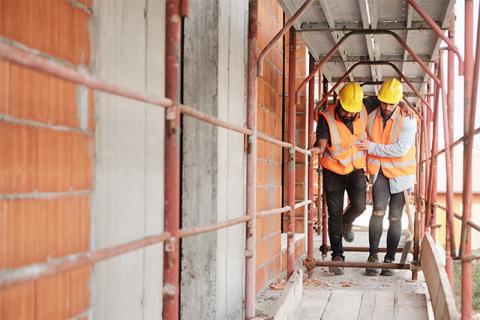Construction Safety: Ergonomics
April 5, 2021If you’ve heard of ergonomics, it’s probably because you work at a desk and there have been many news features about how desk work can negatively impact your body. The office environment isn’t the only one that has physical risks associated with repetitive actions – construction sites are at high risk for workers being subject to work-related injuries.
At Capitol Tech, students studying construction safety take coursework in ergonomics. Ergonomics is the study of people’s efficiency in their working environment, and often focuses on implementing strategies to reduce the risk of work-related injuries.
SAF-304, Capitol Tech’s ergonomics course, covers basic ergonomic and human factors concepts, such as anatomy, kinesiology, physiology, biomechanics, anthropometry, and physical/psychosocial ergonomic risk factors. The course also discusses mechanisms of injury for common musculoskeletal disorders (MSDs), preventative measures, compensation, rehabilitation and return to work strategies.
According to the Occupational Safety and Health Administration (OSHA), work-related MSDs are one of the most frequently cited reasons for lost or restricted work time. The Bureau of Labor Statistics (BLS) reported MSDs were responsible for over 30% of all worker and injury cases. The construction industry is considered to be high-risk for MSDs and other workplace injuries.
OSHA recommends implementing an ergonomic process to reduce the risk of MSDs. Some of the important elements of an ergonomic process include:
- Provide management support, which involves ensuring managers set clear goals related to ergonomics and communicate those goals to staff
- Involve workers by having them identify what hazards they encounter and offering suggestions for how to reduce risks
- Encourage early reporting, which helps to prevent or reduce the severity of symptoms as well as help to identify areas of improvement before they become a bigger issue
- Evaluate progress through established evaluations and corrective action plans to assess the effectiveness of the ergonomic plan
Capitol Tech educates those studying ergonomics in common tools and strategies used to recognize and analyze work tasks for ergonomic risks and the evaluation of common work environments, including the mechanics of recommending and supporting ergonomic improvements, use of ergonomic innovations, and task/work environment redesign are examined.
OSHA’s Training Academy on Ergonomic Hazards in Construction explains that on the job injuries impact much more than day-to-day operations.
“Working hurt reduces productivity, but continuing to work hurt can result in disabling injuries that end a career,” states the training. “Many laborers retire by age 55 because they just can't do the work anymore. Many can't enjoy their retirement because of their disabilities.”
For students studying construction safety, ergonomics is a key area of study that provides foundational information for safer, healthier workplaces.
Want to learn about construction safety? Capitol Tech offers an Online Bachelor’s Degree in Construction Safety to prepare students with a strong foundation in construction, safety, risk management and management skills.. To learn more about Capitol Tech’s degree programs, contact admissions@captechu.edu.



